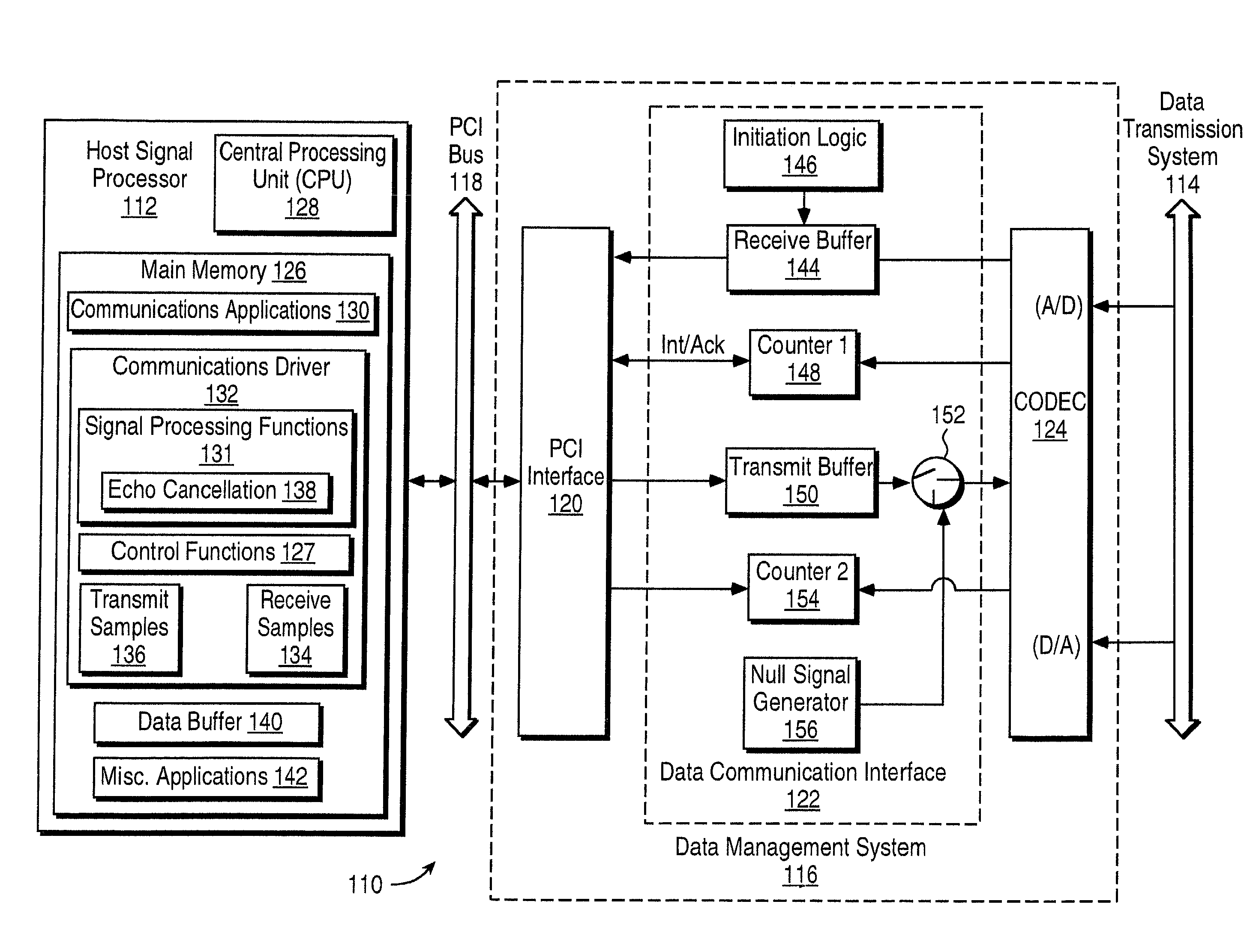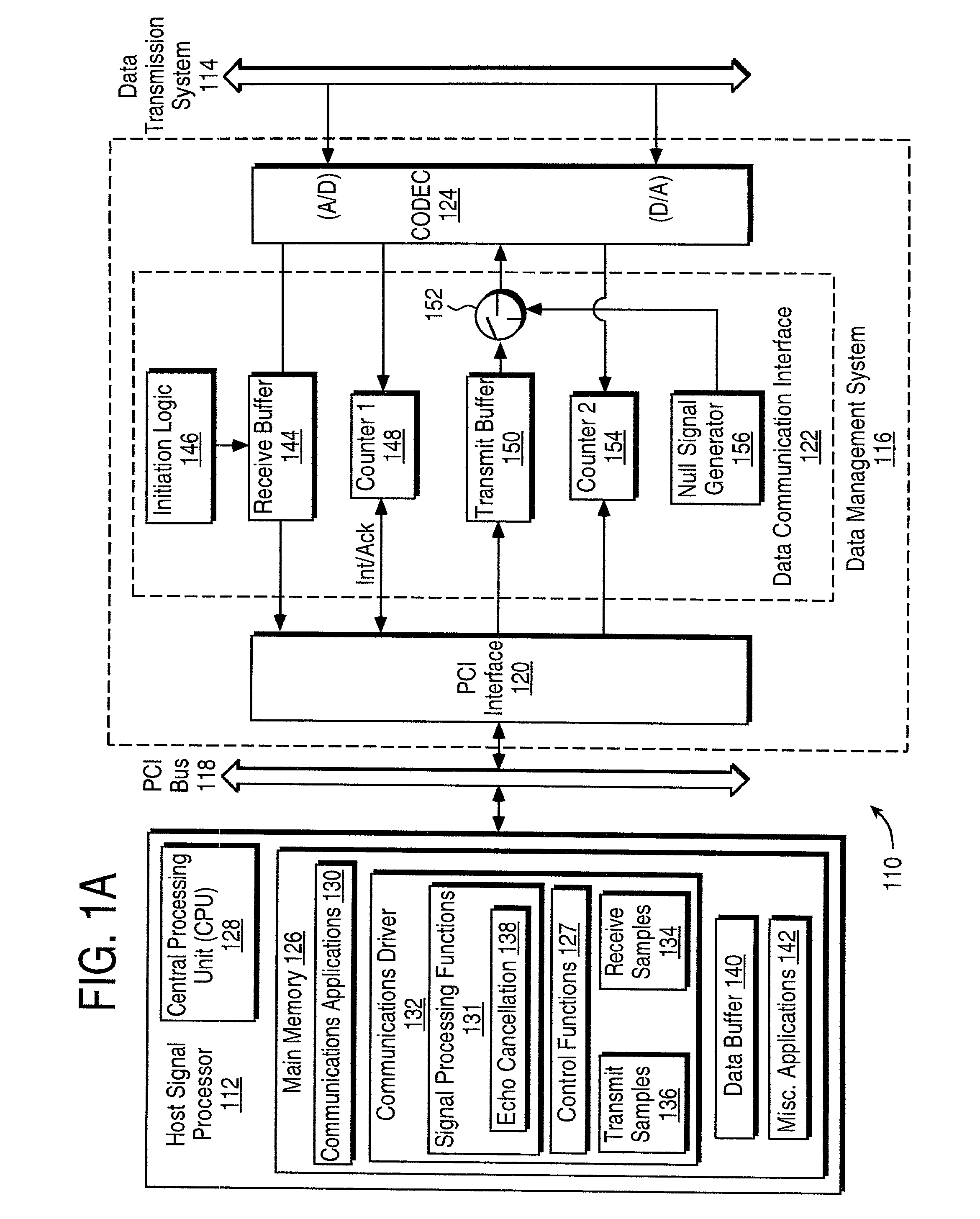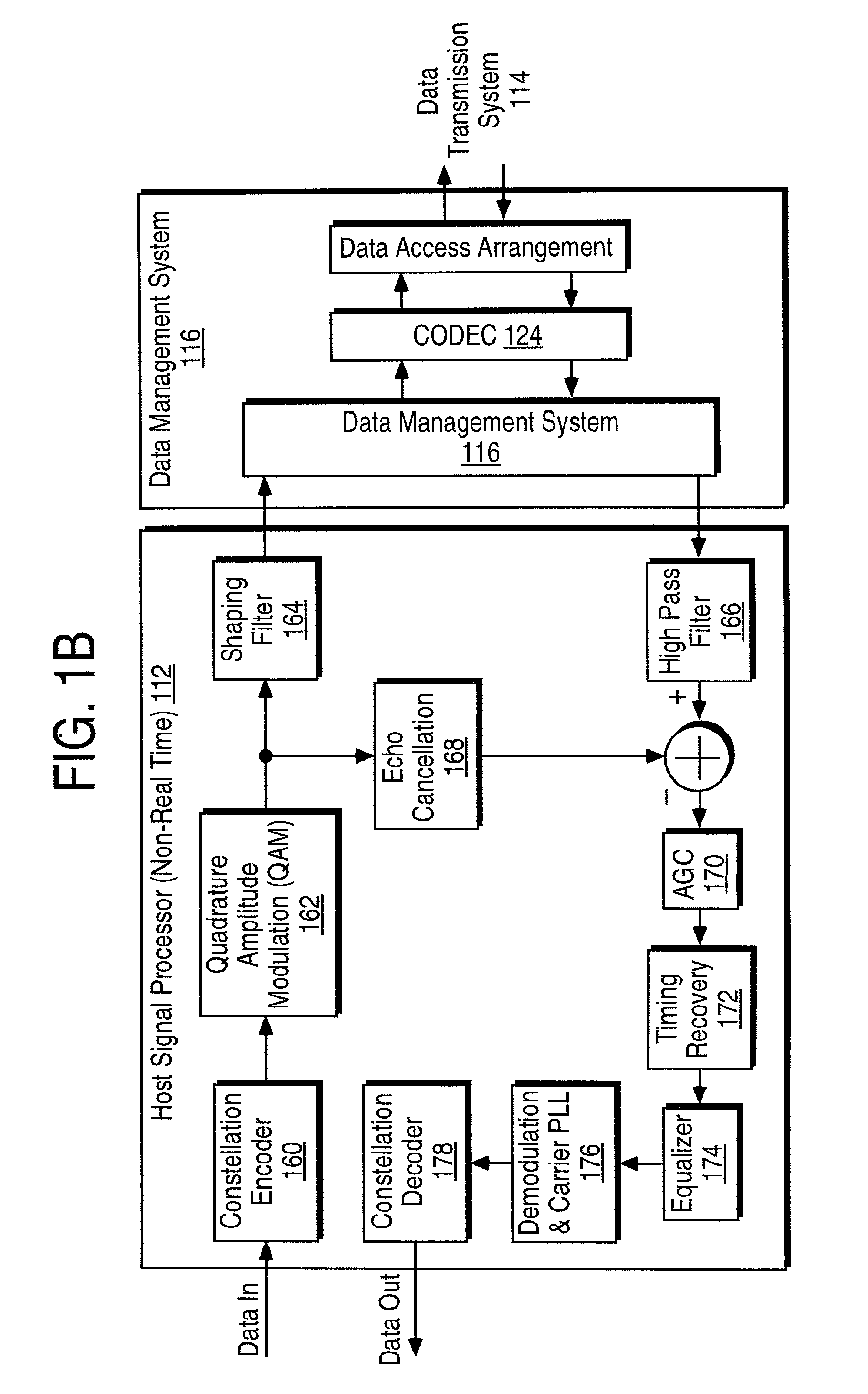Data communication device
a data communication and data technology, applied in data switching networks, instruments, frequency-division multiplexes, etc., can solve the problems of cancellation schemes not being able to track transmit echo properly, not being able to respond at the sampling rate of codecs, and not being able to process them at a consistent rate, etc., to achieve low noise, simplify operation in an overflow condition, and less data loss
- Summary
- Abstract
- Description
- Claims
- Application Information
AI Technical Summary
Benefits of technology
Problems solved by technology
Method used
Image
Examples
Embodiment Construction
[0024]The invention is directed to an interface for providing effective transfer of data between a host signal processor (HSP) and a CODEC. The invention is particularly adapted to interfaces for use in personal computers and will be described in that context. It will be appreciated, however, that this is illustrative of only one utility of the invention, and that the invention has greater applicability and utility.
[0025]Briefly, the invention provides an interface configured to transfer data between an A / D-D / A converter, such as a CODEC, and a HSP in conformance with the V.34 recommendation as well as prior and subsequent recommendations. A receive buffer is connected between the CODEC and the HSP for receiving data from the CODEC and for transferring data to the HSP when the HSP is ready to receive data. The receive buffer can be a first in-first out (FIFO) configuration where data enters in one end of the buffer and exits out the other end. Unlike the prior art configuration disc...
PUM
 Login to View More
Login to View More Abstract
Description
Claims
Application Information
 Login to View More
Login to View More - R&D
- Intellectual Property
- Life Sciences
- Materials
- Tech Scout
- Unparalleled Data Quality
- Higher Quality Content
- 60% Fewer Hallucinations
Browse by: Latest US Patents, China's latest patents, Technical Efficacy Thesaurus, Application Domain, Technology Topic, Popular Technical Reports.
© 2025 PatSnap. All rights reserved.Legal|Privacy policy|Modern Slavery Act Transparency Statement|Sitemap|About US| Contact US: help@patsnap.com



